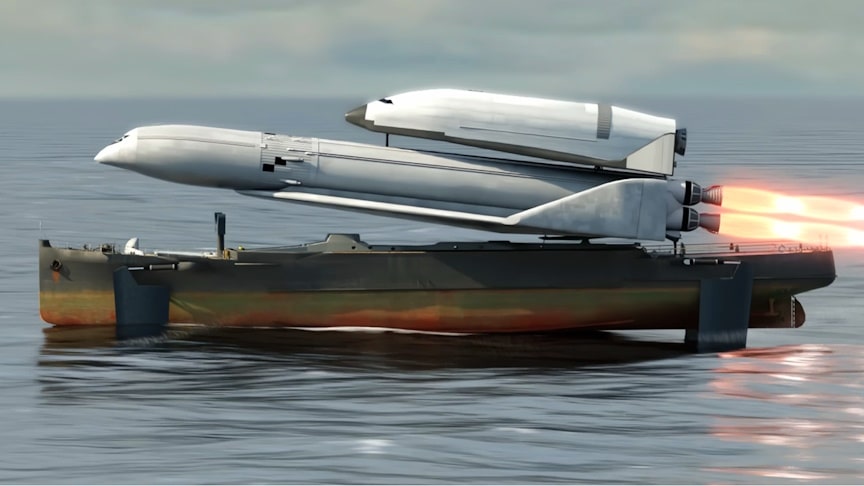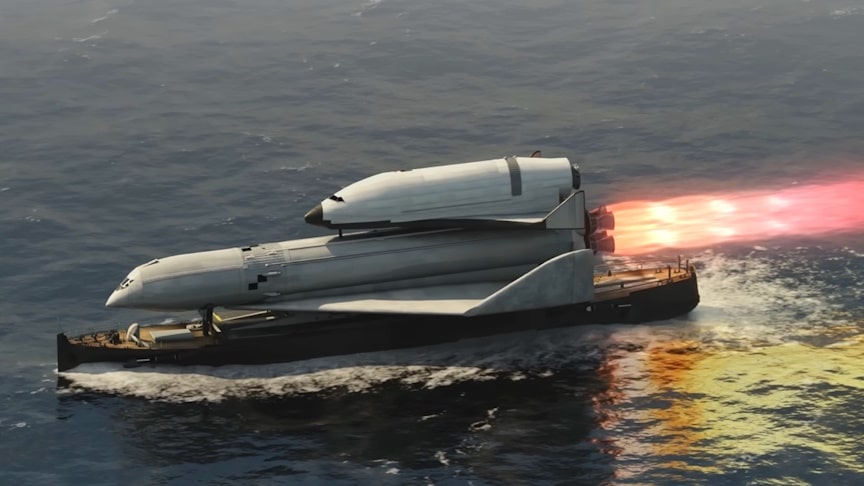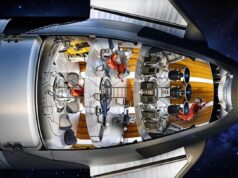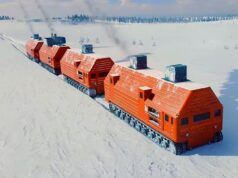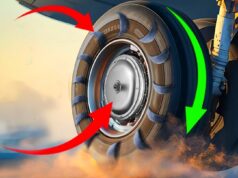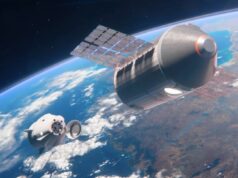This hydrofoil, designed by Alexeyev, served as a precursor to a full-fledged ekranoplan. Its purpose was akin to the Space Shuttle’s external fuel tank, carrying a substantial payload of 200 tons of Liquid Oxygen (LOX) and Liquid Hydrogen (LH2). These propellants were intended to fuel the motors of the second stage.
source.image: Hazegrayart
At its core, the vehicle was conceptualized as a multi-stage system, with the initial stage featuring a hydrofoil weighing approximately 1800 tons and stretching 70 meters in length. Mounted atop the hydrofoil, the second stage, estimated at 210 tons, utilized the LOX and LH2 from the first stage to accelerate the entire assembly to a remarkable speed of 180 km/h over a span of 110 seconds.
source.image: Hazegrayart
This acceleration occurred along the surface of the Caspian Sea, or alternatively, the Aral or Lake Baikal, effectively utilizing the vast water bodies as makeshift runways. After reaching the desired speed, the second stage detached from the hydrofoil and initiated its own propulsion system, lifting itself off the now-empty barge.
Advertisement
This second stage was an innovative creation from Sukhoi, designed as a high-speed reusable winged rocket plane/booster. Its primary objective was to elevate the third stage—an actual spaceplane, also crafted by Sukhoi—to a high altitude. The spaceplane, a pivotal component of the system, was equipped to propel itself into orbit while the booster, having fulfilled its purpose, coasted back to Earth.
While details about the piloted nature of the booster remain uncertain, given Sukhoi’s background, it is plausible that it might have been manned. The final stage of this remarkable vehicle was a tail-less rocket plane, boasting a mass of about 80 tons and spanning 40 meters in length. This design made it comparable to the American orbiter

